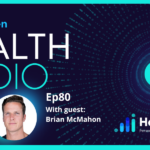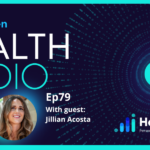The History of Cold Water and Cold Air Therapies
Although the health benefits of cryotherapy are reemerging, cryotherapy treatments – and it’s distant relatives – have a long history of use in medicine. As far back as 460 BC, the Greek physician Hippocrates was the first figure in medical history to document the benefits of hydrotherapy, or using water to trigger healing and/or general wellness. By the 19th century, Benedictine monks were using nearby springs for therapeutic use, and throughout the ages since, cold and hot water therapies have been used by the medical community for healing ailments, athletic performance recovery, and overall health and wellness.
Cold Water Submersion (Cold Plunge) vs. Cryotherapy
Cold therapies, whether in an air chamber or a submersion tank, use the application of extreme cold to activate the body’s natural healing powers. Cold water submersion (or cold plunge) is the practice of entering an ice bath, typically for 15 to 20 minutes at 50 degrees Fahrenheit. Whole-body cryotherapy is the practice of entering a temperature-controlled room at -155 to -184 degrees Fahrenheit, typically only for three minutes.
So What’s the Science?
Today, there is a lot of science behind cold therapies (wet and dry). These therapies allow your body to access and release naturally-occurring biochemicals that are active in reducing pain and inflammation, speeding metabolism, and detoxifying the body and blood of harmful toxins.
In a nutshell, here’s what’s happening: your body goes into a state of ‘cold shock,’ dropping the skin temperature around core nerve ending neurons. This triggers two reactions in your brain: one that releases endorphins (feel-good hormones) in vast amounts very quickly, and one that releases norepinephrine (anti-inflammatory protein) in the brain at approximately three times the normal rate. That’s the brain sending survival signals to your body. This also triggers the constriction of your vascular and muscular systems to begin transporting blood, nutrients, and resources from your extremities to core organs. Additionally, blood detox and enrichment begin in preparation for the ‘survival’ period.
The Health Benefits of Cryotherapy
The resulting health benefits of cryotherapy are increasingly well-documented in the medical community, so let’s dive into the range of outcomes you may experience.
1. Improved overall health and wellness. Medical studies are showing whole body cryotherapy eases a wide range of chronic medical conditions from osteoarthritis and fibromyalgia to auto-immune deficiencies, rheumatoid arthritis, multiple sclerosis, psoriasis, dermatitis, and more. Patients also report:
- Improved sleep
- More energy
- Pain and inflammation relief
- Accelerated weight loss
- Improved circulation
- Faster surgical recovery
- Improved mood and reduced anxiety
2. Skin and beauty enhancement. The cold environment activates deep layer skin receptors telling the body to increase the production of collagen. The resulting collagen production helps with:
- Firmer, tighter skin
- Diminished appearance of cellulite, varicose and spider veins
- Increased weight loss and caloric burn
- Reduced blemishes
- Stronger, fuller hair and nails
3. Improved athletic and sports performance. After a cryo session, higher concentrations of oxygen and nutrients in the body help muscles, ligaments, and tendons better absorb and utilize them. That, in turn, boosts metabolic activity. So for the athlete, both performance and recovery are improved including:
- Improved overall athletic performance
- Improved joint function
- Faster recovery time
- Increased energy
- Reduced inflammation and muscle soreness
- Reduced tendonitis and shin splints
Who Should NOT Use Cryotherapy?
Anyone who’s pregnant or has a heart condition should not use cold water submersion or cryotherapy as the risks simply outweigh the benefits. If you’re unsure if it’s right for you, check with your medical practitioner.
How to Find the Right Cryotherapy Center
No. It’s not just a simple Google search that includes keywords and your zip code. Finding the right cryotherapy center requires a little deeper dive. Here are some keys to finding a quality center to help on your cryo-journey, so don’t be shy and make sure you ask about the following:
What kind of equipment do you have?
Tip: look for facilities that offer whole body cryotherapy
Does your customer service team measure skin temperature?
Tip: look for facilities that measure your skin temperature before and after therapy to ensure you are getting the right effects
Is the cryo chamber located in a private area?
Tip: You’ll be stripping down almost naked. Ensure the cryo chamber is located in a private area of the facility.
Is It Working? Track It and See.
It’s not uncommon for cryotherapy patients to feel immediate benefits after only one session, but often optimal results are found after just a few sessions. A recommended frequency is 2 to 3 times per week until the goals are met. We recommend tracking your sessions so you can see if other areas of your health are improving.
The Heads Up app allows you to track your cryo sessions alongside all other vital health metrics including:
- Heart rate variability
- Sleep
- Blood pressure
- Inflammation (hs-crp)
- ….and many more

TRY HEADS UP FREE FOR 30 DAYS TO TRACK YOUR CRYOTHERAPY SESSIONS
Still want more info? Check out these useful resources.
Knowledge is power, so here are a few more helpful resources to check out before you take the ‘plunge’ into the world of cryotherapy and cold water submersion:
- Health Benefits for Cold Water Immersion and Cryotherapy (https://youtu.be/3OFjEaEGL8w)
- Cold Therapy (https://2mealday.com/article/cold-therapy-incorporate/)




















Nice read! This article really gave me a better understanding about the health benefits of cryotherapy. Thanks a lot for posting!